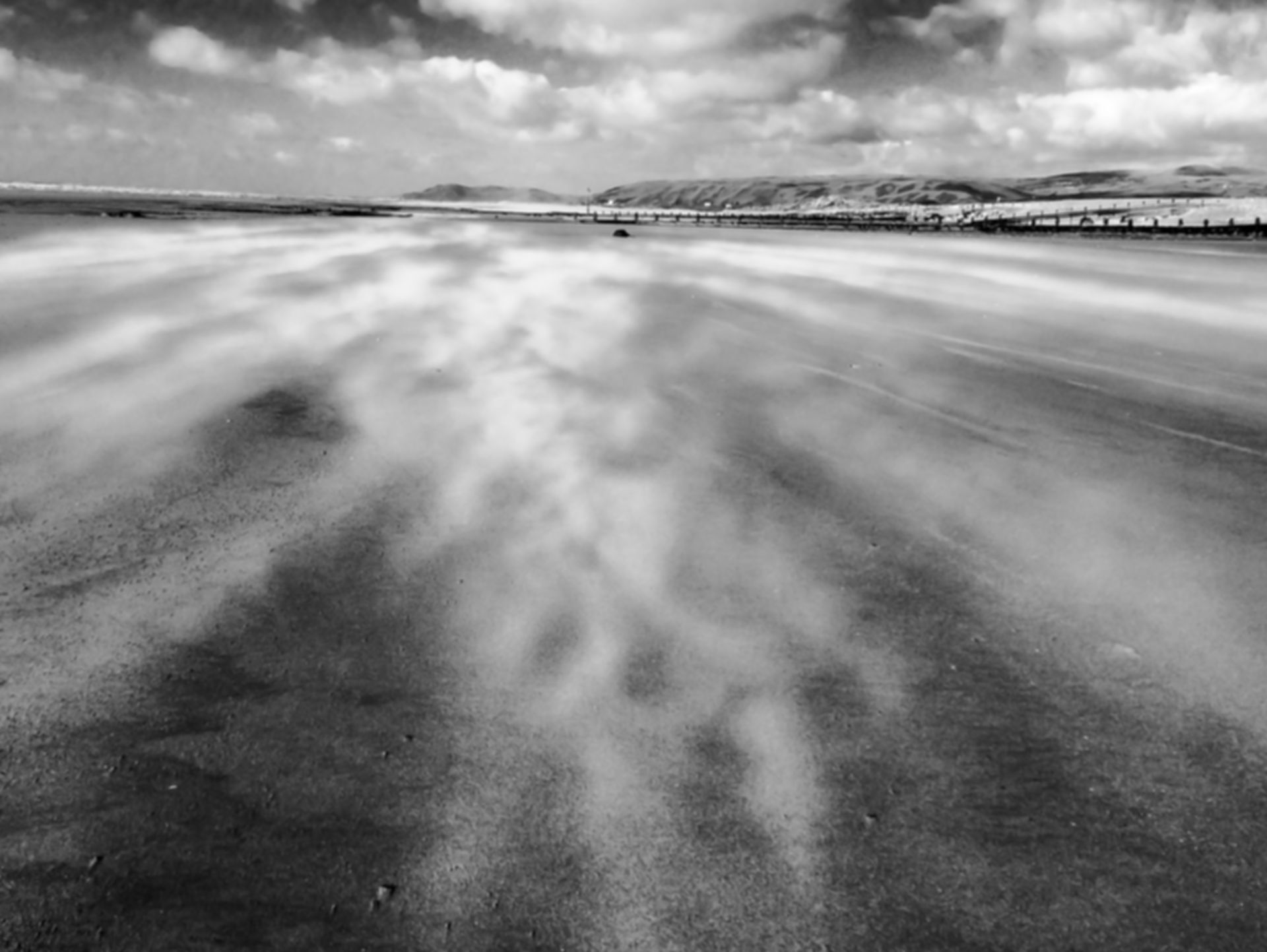Penrolio in Penarth - When Mari & Bendigeidfran blessed the old new year.

Before 1752, the new year in Wales was celebrated on the 25th March; e.g. the 24th March 1700 was followed by the 25th March 1701. Of course, this roughly coincides with the Equinox (and the 'original' Hebrew new year and also that which is celebrated in Iran). It was known as Lady Day, which is not to be confused with Ireland's 'Lady's Day' though, which is the feast of the assumption of Mary, on August 15th.
This old new year, was part of the Julian calender (Old Style/O.S.), which was replaced by the Gregorian calender (New Style/N.S.) in much of Europe from 1582, as decreed by Pope Gregory XIII. It was only recognised by Catholic churches and countries though, not by Protestant and not by civil law, thus it didn't catch on in Britain for nearly another two hundred years - becoming standard after The Chesterfield Act of 1750. At which point, people are alleged to have rioted due to thinking that they had been deprived of eleven days of thier lives. Even though the difference is actually twelve days and no time was actually Dr Who-ed.
Confused yet?
The more this tapestry of time is unpicked, the more complicated it becomes... therefore, for more information regarding why religious, cultural and financial calenders are they way they are (and consequently why only Irish Catholic grandmothers ever seem to known when Easter is going to be), then I suggest you read the following explanation: here.
The crux of the issue, is that O.S. is roughly twelve days behind N.S. and some people were not inclined to alter their traditions to suit. Particularly Protestant areas of Wales, in particular. Thus in some Welsh towns and villages, a compromise (if you can call it that) has developed, wherein the new year is recognised on the Julian January 1st, instead of the Gregorian. This is called, Hen Galan.
It was consequently on this day, last weekend, that I took a series of trains down to Penarth in Glamorganshire, to bring in the Old New Year in the company of intrepid iconoclasts, Parry & Glynn.

In association with Teulu Pen-y-Garth and the Coleridge in Wales Festival, the plan as I understand it, was to combine and juxtapose the tradition of the Mari Lwyd with a new/old tradition, creating an antemasque, as one does.

This new/old tradition was the rolling of Bendigeidfran's head down to the sea.

In the Second Branch of Y Mabinogi, the great giant Bendigeidfran (sometimes also known as Brân the Blessed, the blessed crow), becomes mortally wounded in a battle over in nearby Ireland. He directs his men to sever his head and to take it back to his kingdom of Harlech. This they do - and the head continues to be able to talk and feast with the seven of them there for seven years. After which, they travel down south to Gwalia (taken now to be Grassholme), where they remain another eighty years under enchantment. This enchantment allows for the continuation of oblivious merriment as long as nobody opens a certain doorway out across to Cornwall. If they open this door, the Door of Sorrows, then not only will the magic fade but all the woes of the world will come upon them.
Of course, one of their number (Heilyn fab Gwyn) eventually breaks the spell, the door is opened and the magic dies - as does Brân. All of the ills of the world flow out from Cornwall's sight and the men are left in despair at the ruination of Britain's once fair and noble land. Brân's men take the now silent head and roll it to London, to the Gwynfryn, White Hill (some say this is where the Tower of London now is, others that it is Primrose Hill, I have to yet to explore my own opinion on the matter), where it is buried looking out to France to watch for invasion.
Given the current political climate, Richard Parry and Chris Glynn decided that perhaps a re-enactment of the rolling of Brân's head was called for. Being clever chaps, they set about creating one - and also the Door of Sorrows, which was rapidly re-dubbed by participants as The Brexit Window.


(The pictures above feature Parrys' Snr and Jnr creating said portal)
Many people gathered around for the event, it attracted quite a crowd, from small children to parents, the press, artists, random intellectuals, photographers and the usual massing of bewildered passers by.

The team itself included none other than that other legendary giant, Ivor Davies, doing his best Highwayman of Penarth impersonation.

There was a collective explaining of the story about Brân's head and why we were rolling it, what Hen Galan was and why there was a ghostly grey horse lurking in the background beneath a bare and wintered tree.

Then the head was carefully wrapped in a blanket and tied up with hessian rope (some people say that the real head was so big that many blankets had to be sewn together, creating the first ever Welsh quilt).

Once sortof secured, the rolling began.


This was accompanied by a song, reproduced here with permission from Parry & Glynn:

I walked with a compatriate, carrying Brexit on our shoulders, ahead of the head. Down the pavement we went, then down the quayside to the sea, across the stony shore and back up to the pier. Walking across the liminality of water and land, over the grey and seemingly undending difficulty of slippy stones we were unable to look up to garner direction. Aware of one another either side of the frame only by the tug and carry, we could concentrate upon nothing more than one step at a time, following voices we barely knew.

Coverage of this can be found here: Penarth Times
Once rolio-ed, Brân took an ironic rest at the roadside

and the Mari went from hostelry to hostelry, being called and recalled, banished and welcomed with soaring song.

At some point, I swopped the lefthand side of my sorrowful frame for the Mari's oddly comforting white and bell bedecked robes.
(Photo Credit: David Sinden)

It was most odd being led again by the sound of strangers. The skull itself makes singing resonate, light is diffused by the white cotton, the discipline of holding her spine still and remaining silent is mesmeric. Some day, when I am ready, I shall write about Being Mari.
In the meantime, back to the end of our rolling. We settled Brân down in his hessian sack inside the cafe,

and carried the idea of him inside his quilt to the other side of the headland, along with the door, Ivor, an apron and a saw.



What followed was then a ritual sawing of the Brexit Window, the Door of Doom, Sorrow, Heilwyn's Curse from Cornwall, Brân's blessing of honest vision - whatever you wish to call it. This performance by Ivor and the two boys has been filmed and will become part of a greater meta narrative, as will much of the day.
Afterwards, there was space for thinking, as the tide washed ever further away.

You can find a twitter feed of the #Penrolio on my account here - which includes Not Haiku of what transpired and a short video of Ivor. My thanks extends to all concerned for welcoming me and my research about Bendigedifran into this event (Of Myth and Man). Hopefully the day not only welcomed in the traditional year with ritual and splendour, community and laughter, but also caused people to stop and think a little about what we still have to left to learn from myth and magic. As an example of how to dovetail different reserarch agendas and performativity with good humour, support and respect, this event was a masterclass. It showed how particpatory culture can be both informative and inclusive, simple and sublime. It need not cost thousands to be effective, or step on anybody else's toes. In the world of wonder, there is room for everyone.























